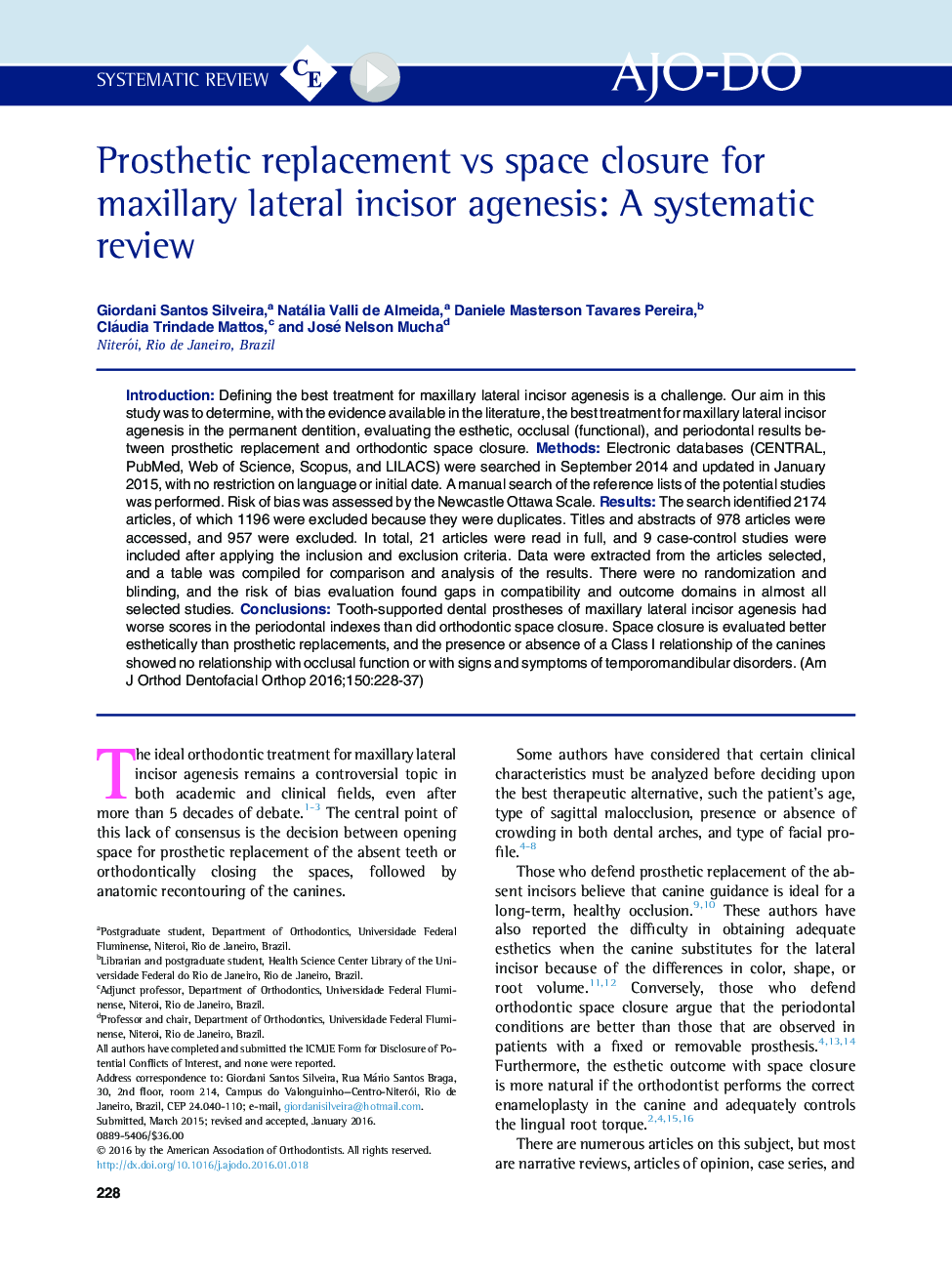| Article ID | Journal | Published Year | Pages | File Type |
|---|---|---|---|---|
| 3115408 | American Journal of Orthodontics and Dentofacial Orthopedics | 2016 | 10 Pages |
•Most data on maxillary lateral incisor agenesis treatment come from retrospective studies.•Class I canines were compared with maxillary canines moved to lateral incisor positions.•No functional advantage to Class I canines was found.•Periodontal scores were worse with tooth-supported prostheses than with space closure.•The esthetic limitations of dental prostheses elicit greater criticism than space closure.
IntroductionDefining the best treatment for maxillary lateral incisor agenesis is a challenge. Our aim in this study was to determine, with the evidence available in the literature, the best treatment for maxillary lateral incisor agenesis in the permanent dentition, evaluating the esthetic, occlusal (functional), and periodontal results between prosthetic replacement and orthodontic space closure.MethodsElectronic databases (CENTRAL, PubMed, Web of Science, Scopus, and LILACS) were searched in September 2014 and updated in January 2015, with no restriction on language or initial date. A manual search of the reference lists of the potential studies was performed. Risk of bias was assessed by the Newcastle Ottawa Scale.ResultsThe search identified 2174 articles, of which 1196 were excluded because they were duplicates. Titles and abstracts of 978 articles were accessed, and 957 were excluded. In total, 21 articles were read in full, and 9 case-control studies were included after applying the inclusion and exclusion criteria. Data were extracted from the articles selected, and a table was compiled for comparison and analysis of the results. There were no randomization and blinding, and the risk of bias evaluation found gaps in compatibility and outcome domains in almost all selected studies.ConclusionsTooth-supported dental prostheses of maxillary lateral incisor agenesis had worse scores in the periodontal indexes than did orthodontic space closure. Space closure is evaluated better esthetically than prosthetic replacements, and the presence or absence of a Class I relationship of the canines showed no relationship with occlusal function or with signs and symptoms of temporomandibular disorders.
